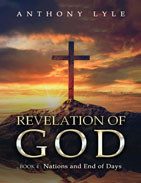
 |
Comprehensive and detailed, Lyle’s work is an intriguing opportunity for biblical scholars to dive deeper and uncover hidden gems that are sometimes lost due to their various translations. Fusing narrative and commentary with scripture, the author creates an educational work that is derived from research, one that seeks to provide ultimate transparency and clarity for those seeking to study the Bible at the highest level. The material sourced and referenced within Lyle’s work is a strong blend of contemporary insight and wisdom from ancient texts and artifacts, which lends itself to being a much more complete work suitable for all.
The work captures momentous occasions throughout biblical history, beginning with Daniel interpreting Nebuchadnezzar’s troubling dreams. Lyle works tirelessly to provide solid context and commentary with each historical arc he shares and analyzes. For example, in the case of Nebuchadnezzar’s dream, he discusses how the wise men were leading the ruler down a circuitous path and promptly compares them to parlor tricks from the fake fortune tellers of today. Yet, when Daniel seeks the revelation of the king’s dreams from God, thus sparing the wise men of Babylon, audiences are able to discern how God works through his devotees. The author’s ability to zoom in on biblical figures and provide an honest assessment of their actions, and then to zoom out and shed light on how those actions run parallel to modern times, is fascinating.
Furthermore, Lyle’s tenacity and care with detail provide an opening to learn about the lives and impact of biblical figures beyond those that are commonly written about. As the last king of Judah, Zedekiah’s reign ends with Jerusalem in tatters, as he is forced to watch King Nebuchadnezzar slay his children before he himself is blinded. While the narratives are filled with intrigue, the author is meticulous with timelines and charts, both of which help tremendously in understanding, for example, how the Hebrew calendar has a different starting point than other calendar systems. Similarly, audiences will also become privy to interesting facts, such as when Lao-Tse implemented the Taoist philosophy in China or the deeper motivation behind Hitler’s relentless pursuit of eradicating anyone who was not “sound of body and mind.”
From the famine in Israel and the Punic wars to Judas’ betrayal and even World War II, the work spans the gamut of events, whether well-known or those that have gone under the radar for years. In the process, Lyle’s data-driven research serves as the ultimate argument in demonstrating that the Bible, in its various forms, translations, interpretations, etc., “is the most accurate history of events of the world.” Above all else, Lyle displays a strong understanding of various learning styles, and even when the text gets a bit dense, he seeks to break down its components and simplify the teaching through flowcharts and diagrams. The visual aspect is a huge support to the narrative, and one that is undoubtedly going to make the flow of the work seamless. With a vigorous commitment to conveying elements of the Bible in its purest, most simple form, Lyle provides readers with an educationally enriching and comprehensive foray into scripture and a Christ-centered history of mankind.